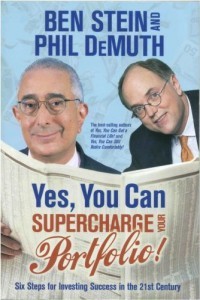
Quotations
Starting out by trying to select investments is like looking through the wrong end of the rifle. Portfolios don’t exist in the abstract. They are created in some context, to fulfill some human purpose. The type of portfolio you should hold depends on what you are trying to accomplish. This sounds so trivially obvious as to be not worth mentioning. But astonishingly, many people skip this step. They begin to assemble their portfolios instead by taking a trip to Wall Street’s giant supermarket of financial products, where it’s easy to get very, very lost.
Stop investing the way people did back when Patti Page’s “How Much is that Doggie in the Window” was topping the charts. It’s time that we moved our investing into the rock’n’roll era. We do this by practicing Markowitzian portfolio diversification, still a new idea to many investors even though it’s 60 years old.
People are forever bragging about their investment returns. Never mind all the cases where they are conveniently forgetting to mention all their losses, or just plain wrong, or outright lying. This talk is meaningless unless we know how much risk they took to get the returns they brag about. The guy at the next locker whose portfolio was up 15 percent last year, while yours was only up 7 percent? He may not know it, but for the risks he was taking, he ought to have been up 30 percent. Knowing returns without knowing risks is like knowing only one team’s score in a football game. If it were simple to take a very small amount of risk and capture a big reward, everyone would do it and everyone would be rich.
The “sweet spot” of the return/risk tradeoff for a portfolio is usually somewhere between 20 percent and 80 percent bonds. An all stock or an all bond portfolio is not usually so efficient as one that contains both asset classes.
The real risk is that your portfolio fails to meet your investment goals. It’s possible that a portfolio that is very low risk in terms of volatility and that has you sleeping comfortably at night should really be keeping you wide awake because it has a very high risk of underfunding your retirement.
The securities industry thinks that what matters is an inner psychological state called your “risk tolerance.” The idea here is that if you are a riverboat gambler type of person, then it’s fine to trade risky options, but if you are a spinster librarian with three kittens, then you’d better stick to CDs and annuities. This is like a doctor saying that your psychological preference to wear or not wear a cast should be a factor in evaluating how to treat your broken leg. In fact, your psychological predisposition to take or shun risk has nothing whatever to do with how you should invest. You should invest in the way that is most likely to achieve your investment goals. For most people, the entire concept of “risk tolerance” should be replaced with their “running out of money” tolerance.
Monte Carlo simulation is not a Ouija Board, but it’s as good an estimate as anyone can make. It takes a riddle wrapped in an enigma, and gives an answer like a red hot chilli pepper wrapped inside a hot tamale. Making these kinds of calculations is the difference between planning a retirement and whistling in the dark. We can’t do this at home using a yellow pad and a number two pencil. We can’t even do it if we’re pretty good with Microsoft Excel. We need to the specialized tools that finance professionals use. Yet unbelievably, very few non-professionals use it. Investors are not availing themselves of the one tool they really need in order to prepare for a future that is coming whether they have made adequate provision for it or not.
People pay great attention to picking a team of all-stars for their portfolios, but this effort is misdirected. It’s how well the team plays together that matters.
Investors pursue their dreams of beating the market through such futile means as individual stock picking, short-term market timing, and chasing winners, yet they ignore the one strategy that reliably offers market-beating risk-adjusted returns: massive diversification within and among asset classes.
If we set the book down, take the dog for a walk, light a Montecristo and blow a few smoke rings while watching the sun set over the Pacific, what strikes us is that, from one point of view, most portfolios we see are all really about the same. They are all variants of what we might call the great global glob of stocks. They remind us – admittedly, we’re reaching here – of those lame, tame rock’n’roll covers sung by pretty white boys in the 1950s: they don’t really reach into the deep jungle boogie-woogie soul of Modern Portfolio Theory. What they have in common is that they are significantly underdiversified. They need a shot of rhythm and blues. Investors have been offered a free lunch of portfolio diversification, but they have settled for a carrot stick on the veranda when they could be inside the banquet hall eating steak.
We are misled by the names and labels of the funds we own to blithely assume we hold diversified investments, when in fact we only own a bunch of diversified names of investments. Diversification is a function of the behavior of the constituent parts of our portfolio, and nothing else. We see the sign for the Matterhorn and assume we’re in Switzerland, when in fact we’re only in Disneyland. This brings us to a fundamental problem with many portfolios today: pseudo-diversification. It is far easier for Wall Street to manufacture funds with different names than it is to manufacture funds that are meaningfully different.